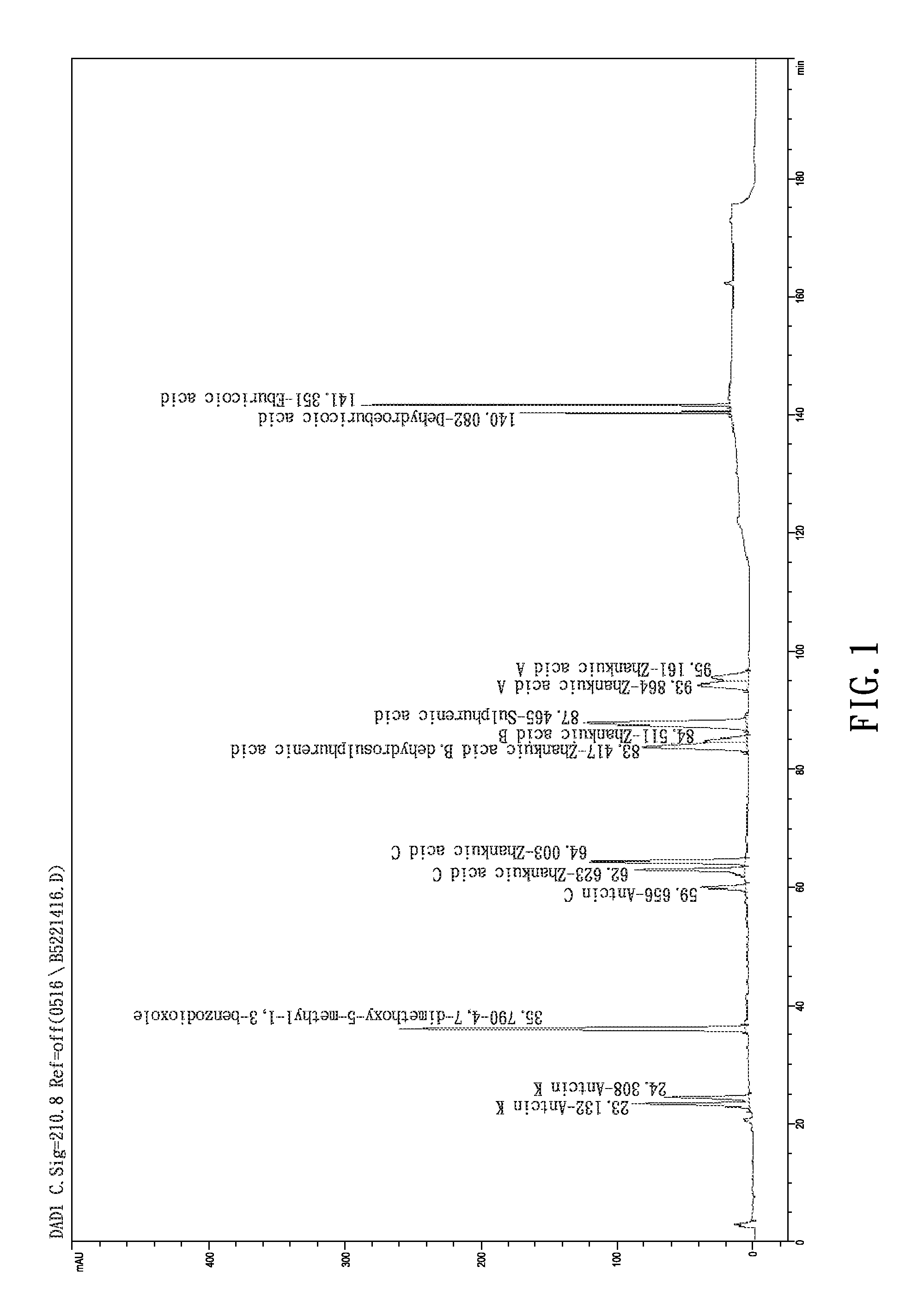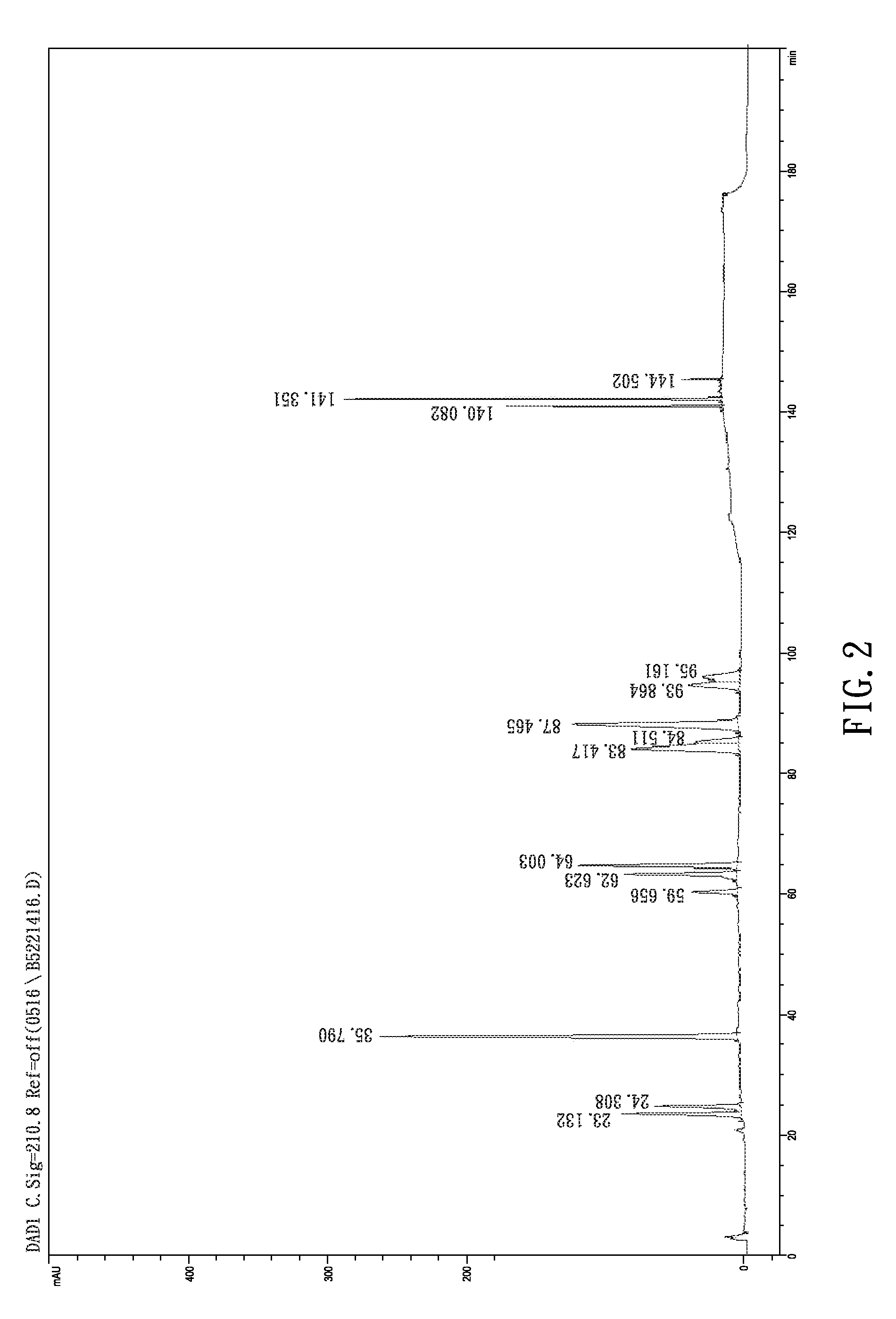Method for determining fruiting body and mycelium of Antrodia cinnamomea and Antrodia salmonea
a technology of antrodia cinnamomea and mycelium, which is applied in the field of method for determining the fruiting body and mycelium of antrodia cinnamomea and antrodia salmonea, can solve the problems of inability to use i>c. kanehirai /i>wood for cultivation of i>a. cinnamomea
- Summary
- Abstract
- Description
- Claims
- Application Information
AI Technical Summary
Benefits of technology
Problems solved by technology
Method used
Image
Examples
Embodiment Construction
[0010]Inventors of this invention compare the components from ethanolic extract of A. cinnamomea among natural basidiomes, cultural basidiomes, natural mycelia and liquid / agar cultural mycelia. Nine triterpenoids (antcins C, K, zhankuic acids A, B, C, sulphurenic acid dehydrosulphurenic acid, eburicoic acid and dehydroeburicoic acid) and one monophenyl component (4,7-dimethoxy-5-methyl-1,3-benzodioxole) from A. cinnamomea were purified and used as standards in analysis of high performance liquid chromatography (HPLC) to differentiation of mycelia and basidiomes of Antrodia cinnamomea in the invention.
Materials and Methods
Fungal Samples
[0011]Natural basidiomes: Three basidiomatal samples of A. cinnamomea were collected from the host C. kanehirai in natural forests at Hsinchu, Chiai and Kaohsiung Counties of Taiwan. Natural mycelia: The mycelial mats of A. cinnamomea grew in the decayed wood of C. kanehirai in natural forest at Hsinchu County were collected. Cultural basidiomes: Isola...
PUM
 Login to View More
Login to View More Abstract
Description
Claims
Application Information
 Login to View More
Login to View More - R&D Engineer
- R&D Manager
- IP Professional
- Industry Leading Data Capabilities
- Powerful AI technology
- Patent DNA Extraction
Browse by: Latest US Patents, China's latest patents, Technical Efficacy Thesaurus, Application Domain, Technology Topic, Popular Technical Reports.
© 2024 PatSnap. All rights reserved.Legal|Privacy policy|Modern Slavery Act Transparency Statement|Sitemap|About US| Contact US: help@patsnap.com









